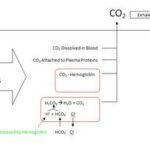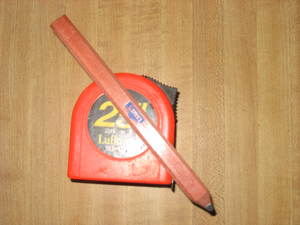Gas, or flatulence, is something every human experiences, from birth throughout their entire life. Many people are embarrassed at this normal bodily function, but most of us pass gas about fourteen times each day, on average, and it’s normal to pass gas even up to forty times a day! Gas is a natural byproduct of human digestion and is composed primarily of oxygen, nitrogen, carbon dioxide, hydrogen, and methane.
Gas is acused basically from two sources. We are constantly swallowing air (aerophagia) when we breath, talk, eat, and drink, and even when we chew gum. Belching will remove some of this air, but the remaining amount travels down into the intestinal tract where it’s partially absorbed and the rest is released by the large intestine out of the body, which is gas or flatulence.
The second main cause of gas is the breakdown of foods. Mostly high fiber foods such as whole grains, fruits, vegetables, and legumes, produce the most gas because the soluble fiber doesn’t get broken down until it reaches the large intestine. In the large intestine, the breakdown of these foods causes chemical reactions which produce gas. However, fiber is an essential part of our diet, regulating the digestive tract, our blood sugar, our cholesterol, and more, so cutting fiber out of your diet would be a hefty mistake.
There are some other causes of gas as well, such as lactose intolerance, laxatives, antibiotics, artificial additives in foods, and diseases such as Crohn’s disease and inflammatory bowel disease.
Flatulence can cause pain and bloating. The pain is the result of air building up inside the gut causing pressure on the organs. Gas pains can be sharp and intense, but are usually short-lived. Keep in mind that abdominal pain is not always caused by gas and could actually be something serious such as appendicitis.
If you suffer from excess amounts of gas and would like to reduce the amount of gas you have, there are some things you can do to resolve this “problem.” First and foremost, treat any underlying conditions you have. Reduce the amount of dairy in your diet if you’re lactose intolerant. Eat several small portions of food each day rather than three large meals. This will aid in digestion and most likely reduce some of your gas. On the same note, chewing food thoroughly will lessen the chance you consume more air while eating and also help the digestion process. Also, consider not using a straw as one tends to ingest more air when using straws. Also on that same note, if you smoke you are swallowing even more excess air that your body could do without, and quitting smoking will not only reduce the gas you experience, but improve your health in many other ways as well.
Another way to reduce gas is to lessen the intake of the gas-causing culprits. The most gas producing foods tend to be beans, cauliflower, onions, apples, sugar-free candies, and gum. Of course, some of these foods are very nutritious so it would be a shame to eliminate them completely, but if you cannot do without these foods and consume a large amount of them that you are unwilling to give up, try using medication to control your gas. Lactrase and Lactaid are two over-the-counter medications available for those suffering from lactose intolerance. Beano, Gas-X, and other similar products aid in digestion and provide the body with an digesting enzyme the body doesn’t have that breaks down indigestible sugars and carbohydrates. Herbal remedies such as herbal teas, peppermint teas and peppermint water mixes are said to help control the formation of gas.
Fatty foods tend to cause more gas for the simple reason that excess fat delays the emptying of the stomach contents and further digestion, thus delaying the natural release of gas and causing a buildup of gas along with bloating and often gas pains. Eating less fatty foods will improve your overall health as well as reduce your gas.
If you are having gas pains that you want to get rid of, but the gas doesn’t seem to want to come out, there are certain exercises and stretches you can perform to aid the release of the gas. One example is called the duck walk, where you crouch down on the floor and waddle like a duck for several minutes. Rolling forward and backward, stretching out the spine, tends to help as well. Relaxation is another great way to encourage the release of gas.
If you are worried that you have gas much more than usual, or experience bloating or cramps more than the average person, you could have a bowel condition or another underlying medical condition for which you should seek professional help. It could be irritable bowel syndrome, Crohn’s disease, or any number of other conditions.
Flatulence, though a daily function for everyone, can be embarrassing and even painful. Gas is produced by some of the healthiest foods, but you don’t have to give them up! There are many ways to reduce the gas your body produces, from diet and lifestyle changes to relaxation and medications. Realize it’s a normal part of life and you are not the only one with gas, even if you fart thirty times or more each day!
Sources:
http://www.howtogetridofstuff.com/health/how-to-get-rid-of-gas
http://www.getridofthings.com/get-rid-of-gas.html
http://www.essortment.com/all/gaspains_rczl.htm
http://www.howtogetridofstuff.com/health/how-to-get-rid-of-flatulence





